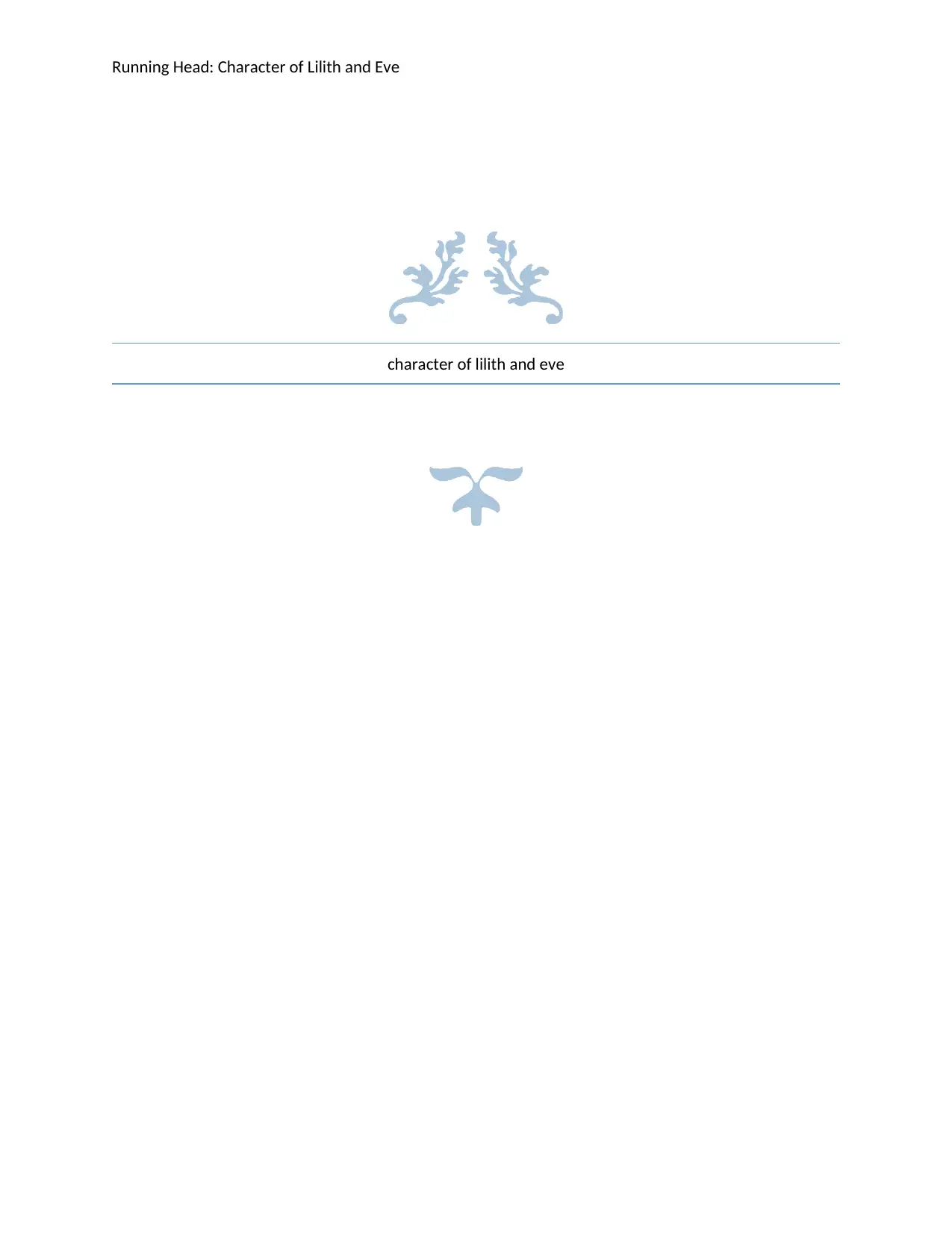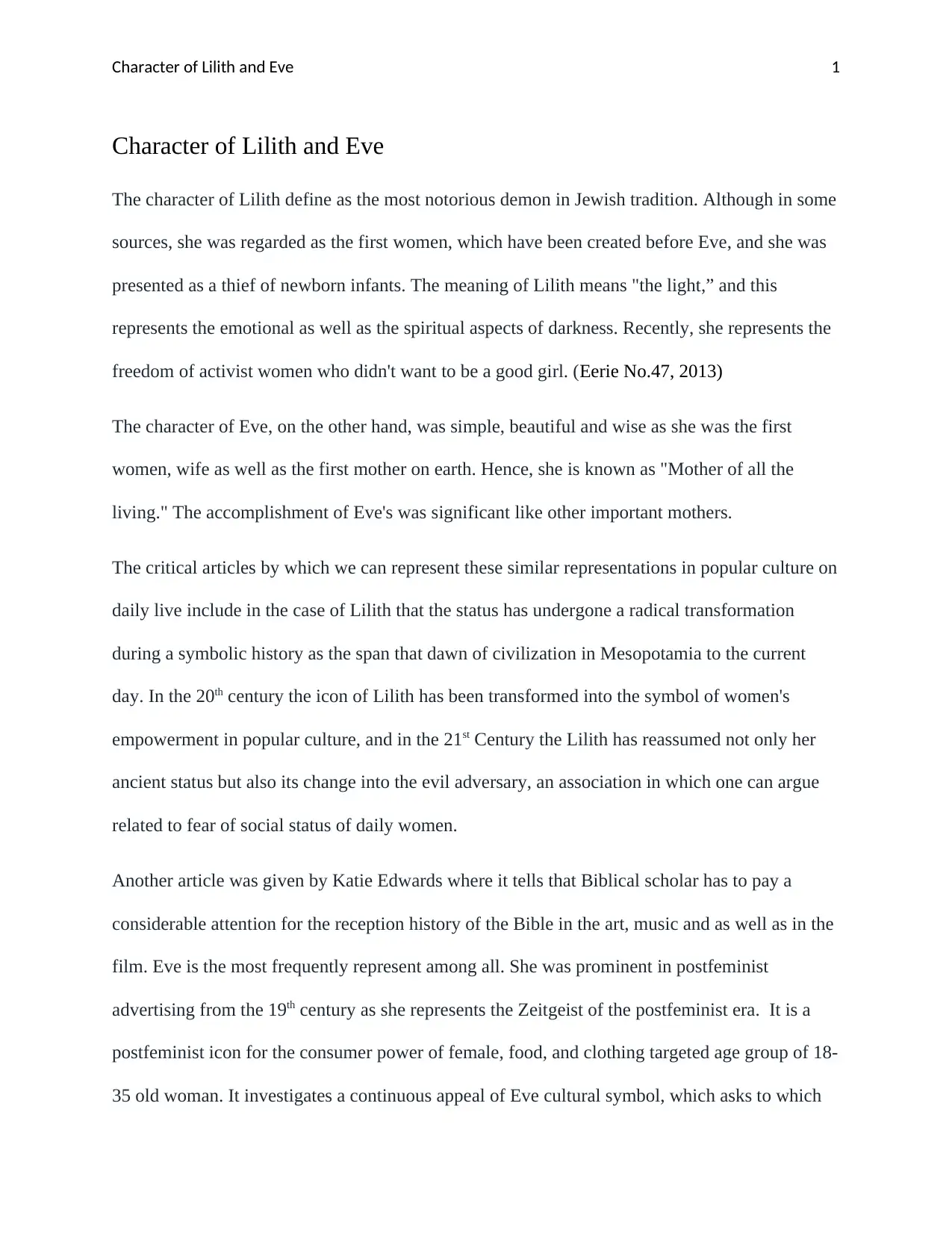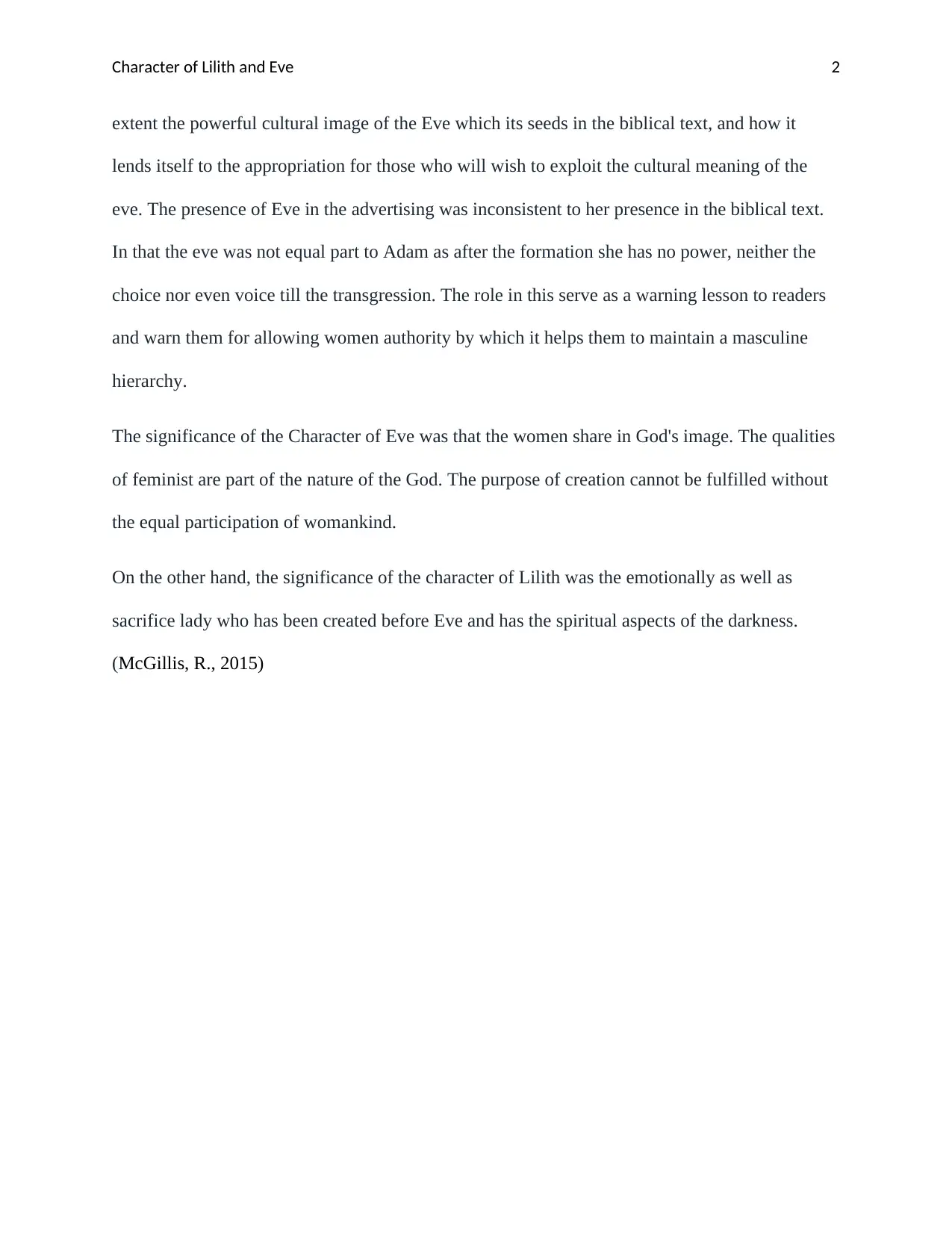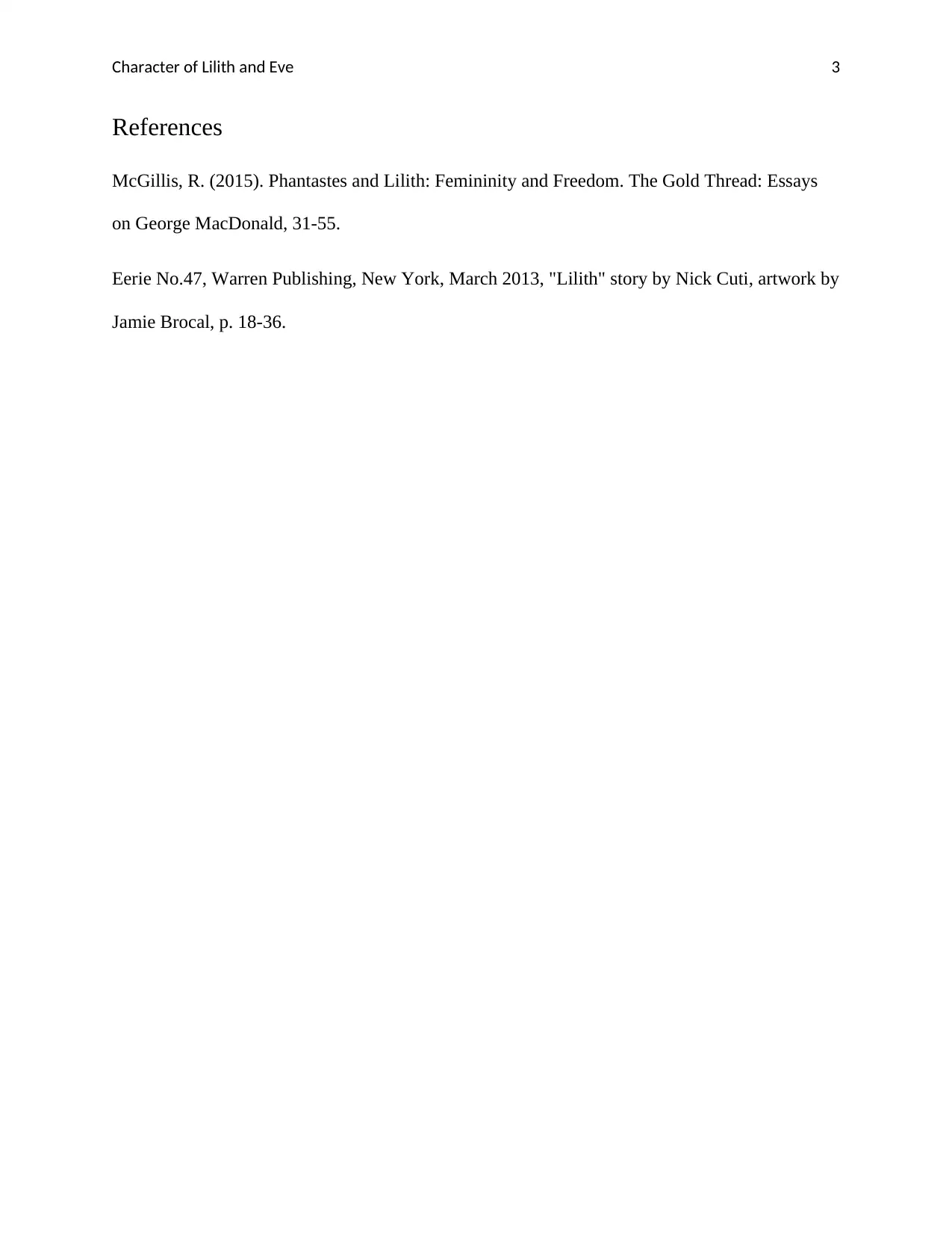A Comparison of Lilith and Eve's Characters in Religious Texts
VerifiedAdded on 2019/10/09
|4
|649
|447
Essay
AI Summary
This essay provides a comparative analysis of the characters of Lilith and Eve, exploring their representations in religious texts and popular culture. The essay begins by defining Lilith as a figure associated with darkness, freedom, and, in some traditions, the first woman before Eve. It contrasts her with Eve, who is presented as the first wife and mother, embodying qualities of wisdom and the 'mother of all living.' The essay then delves into the evolving interpretations of these characters, highlighting Lilith's transformation into a symbol of female empowerment and, conversely, a figure of fear. It also discusses the significance of Eve's role, particularly within the context of postfeminist advertising, and explores how her image has been appropriated to represent consumer power. The analysis references scholarly articles that examine the characters' impact on society and the role of women in religious and cultural contexts. The essay concludes by emphasizing the importance of Lilith's emotional and spiritual aspects while acknowledging Eve's role in sharing God's image and the necessity of women's equal participation in creation. The essay uses references to support the arguments.
1 out of 4








![[object Object]](/_next/static/media/star-bottom.7253800d.svg)